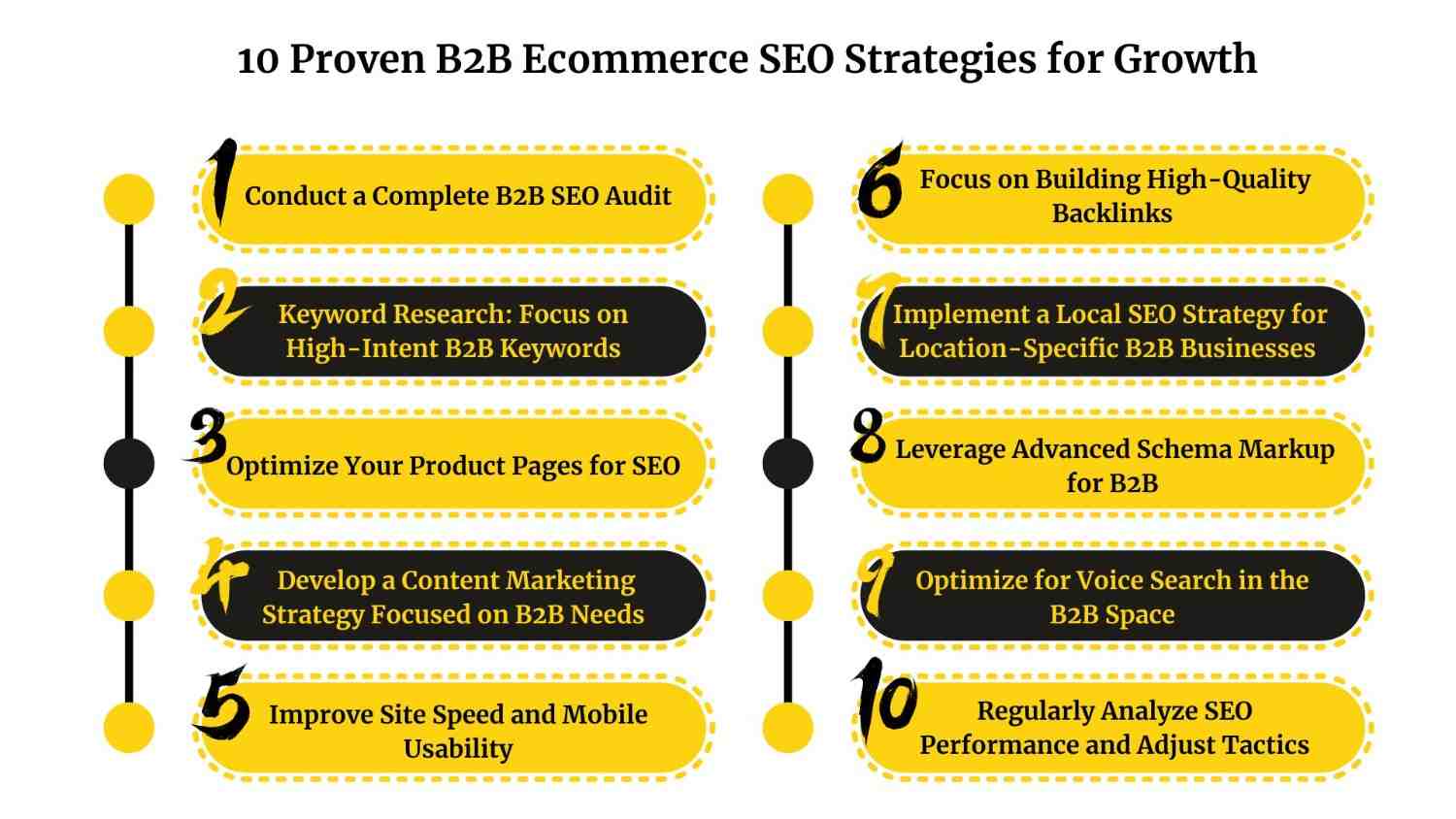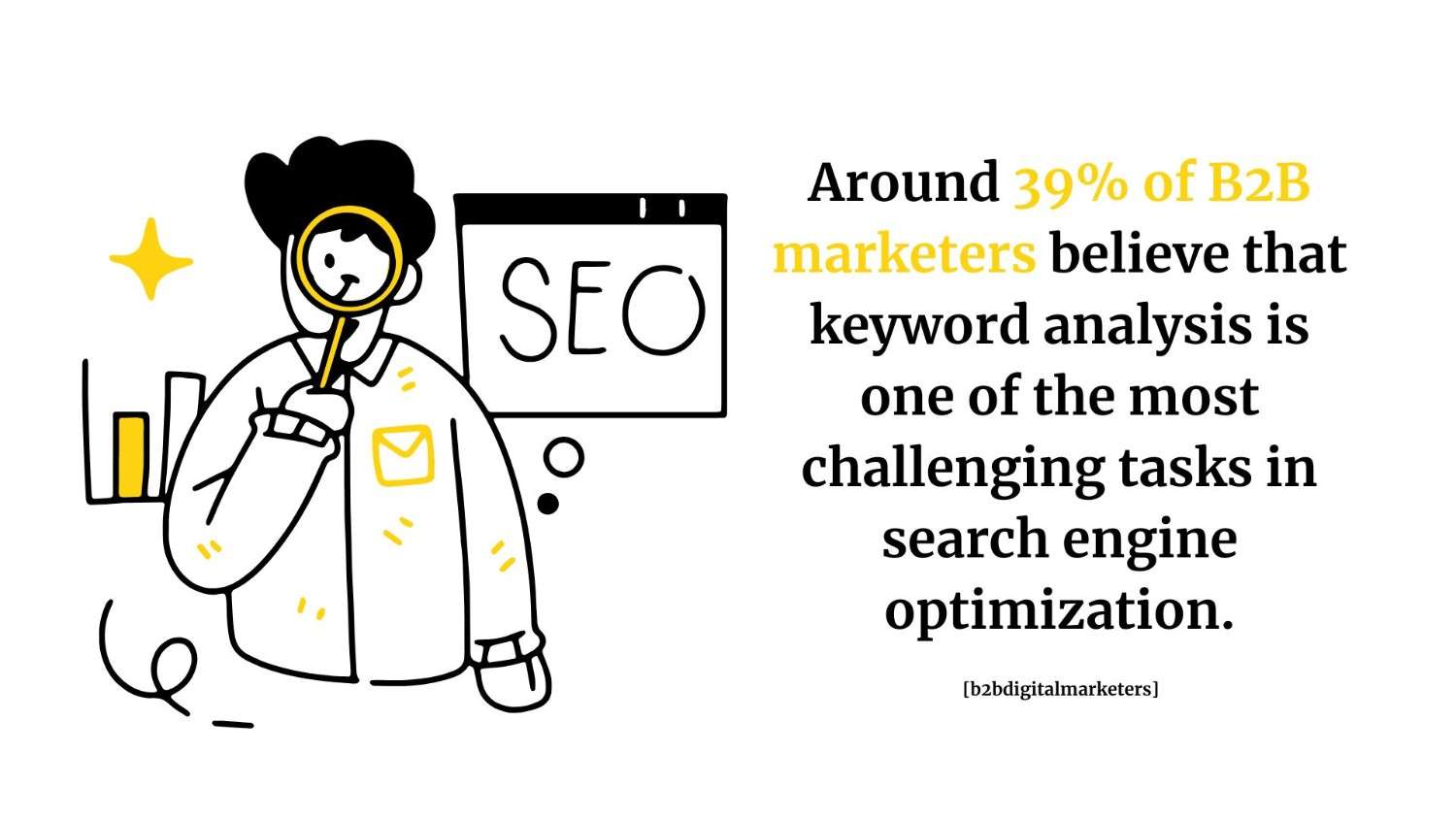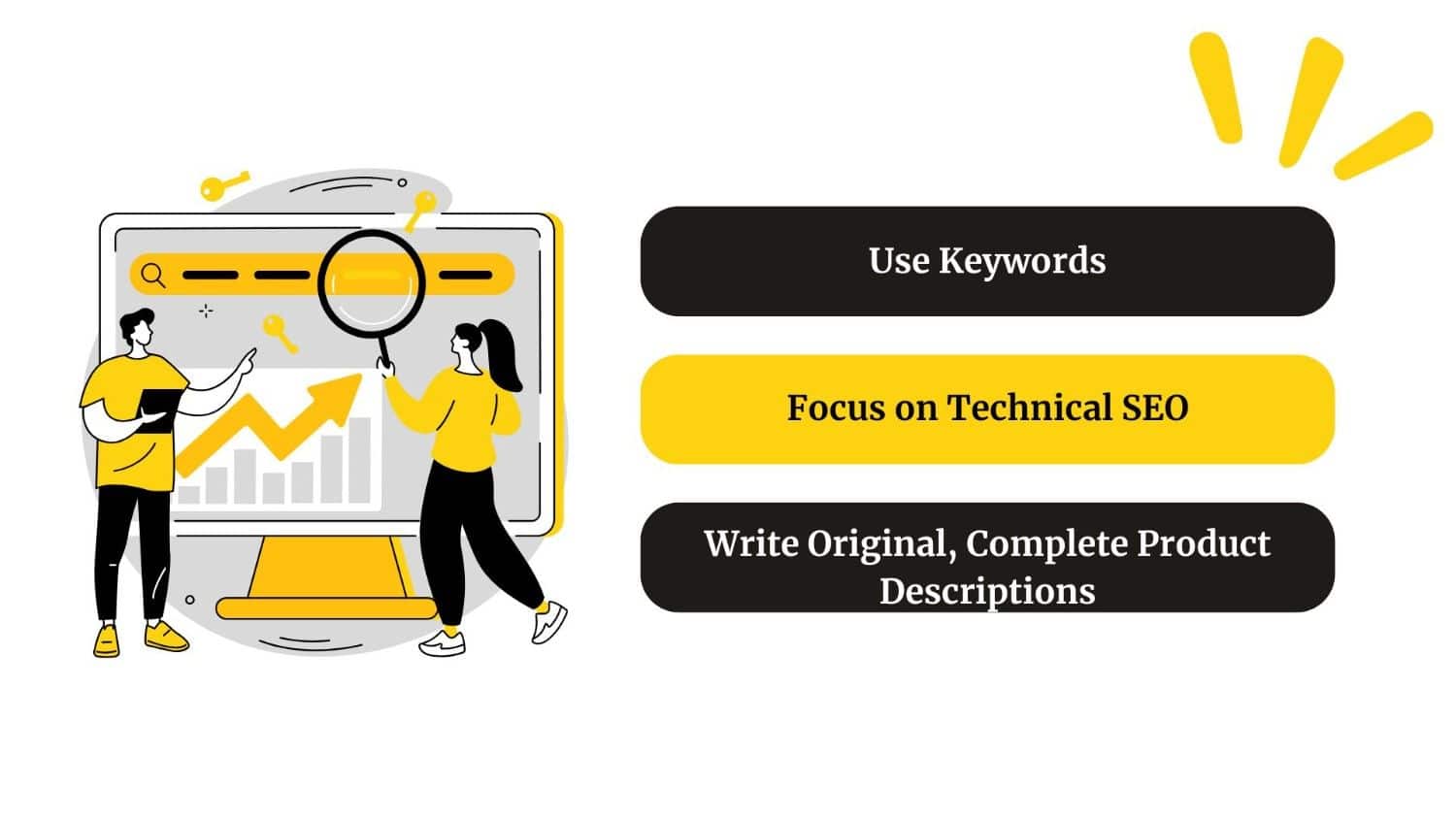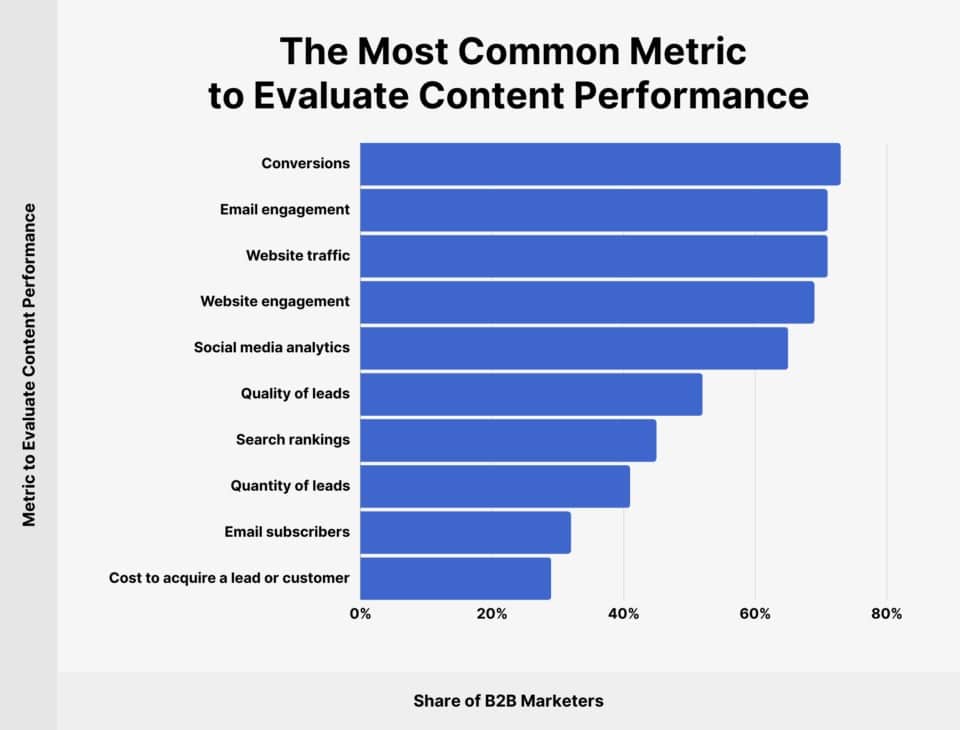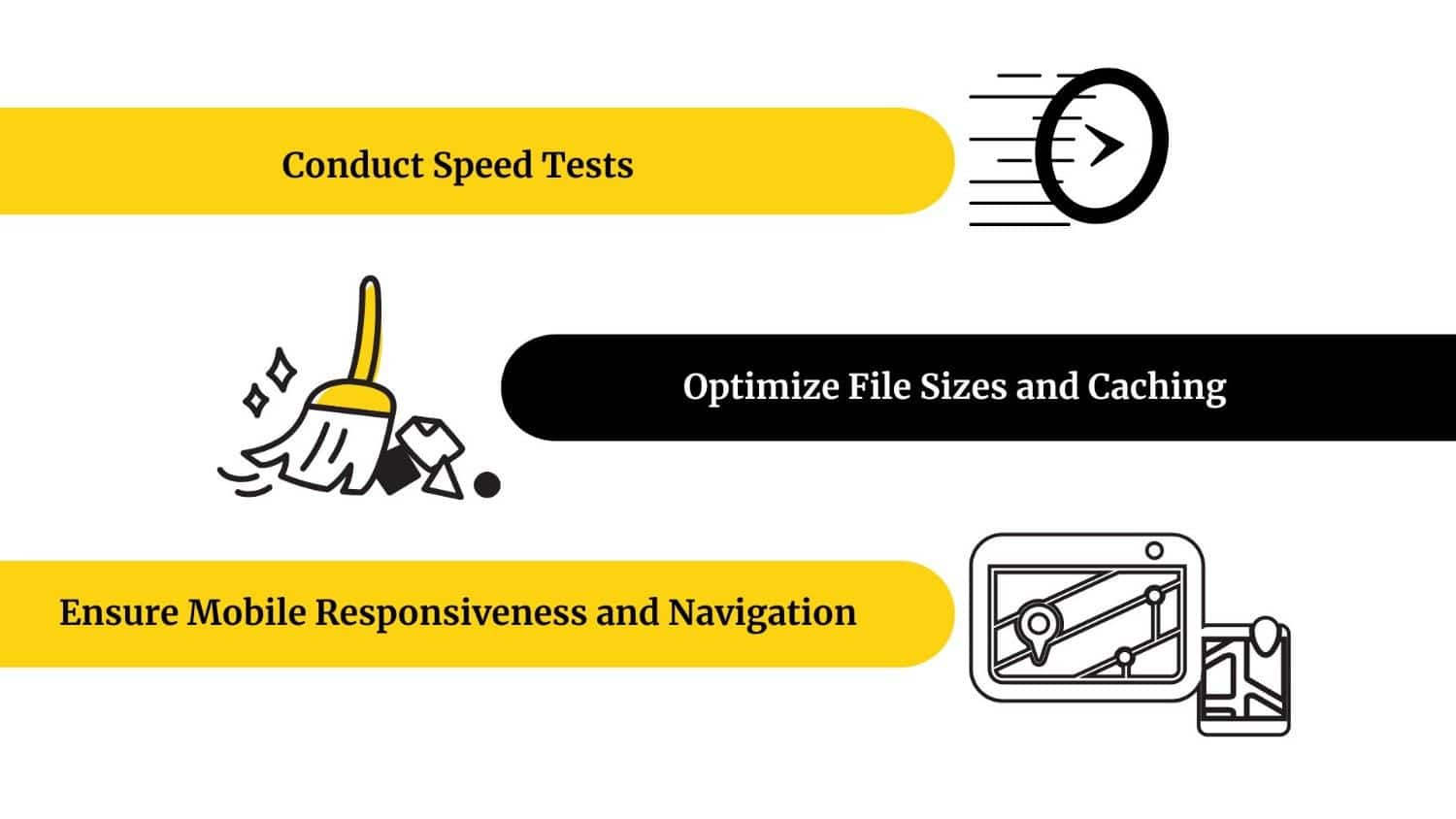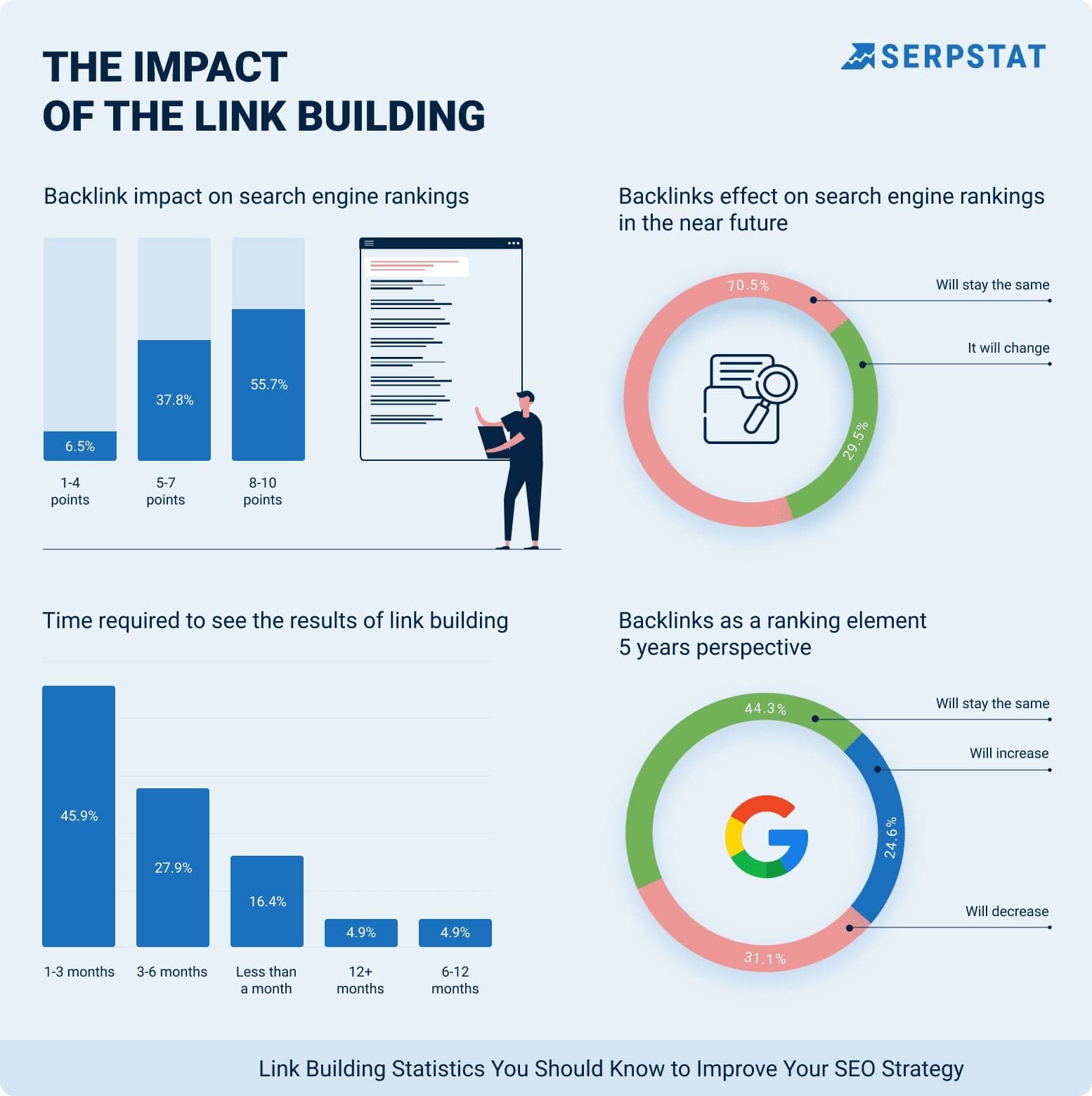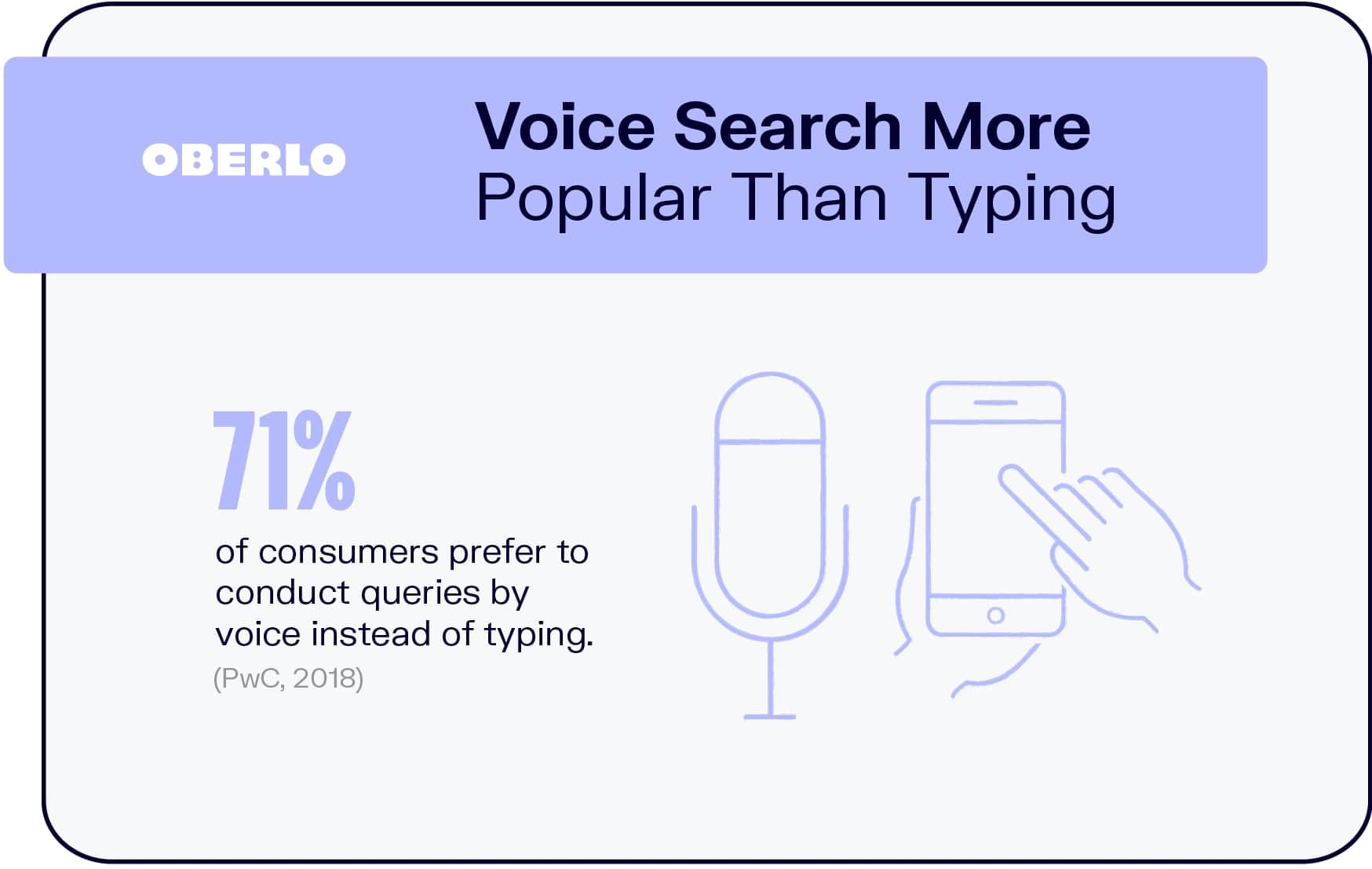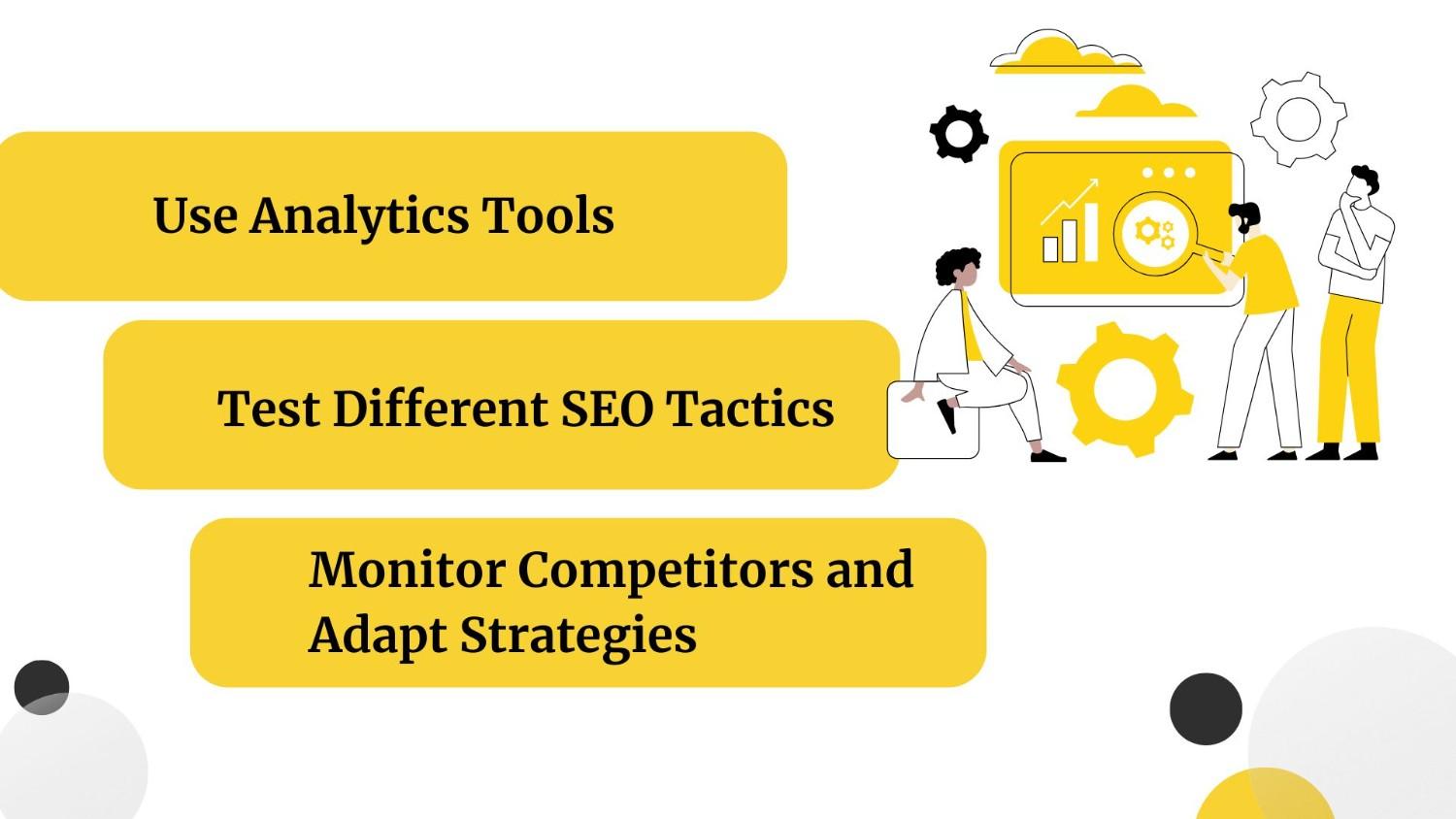You don’t need a magic wand to grow your B2B ecommerce brand. Just some smart SEO spells. Your competitors are secretly Googling “how to outrank you.” Let’s make sure they don’t stand a chance.
Think B2B ecommerce SEO is just about stuffing keywords and praying for Google’s mercy? Think again.
It all comes down to structure, strategy, and smart storytelling in 2025. So, your SEO strategy cannot afford to be basic.
The good news?
You don’t need to reinvent the algorithm. Just understand it.
Let’s explore the 10 proven B2B e-commerce SEO strategies to skyrocket your visibility, traffic, and sales.
The Importance of SEO for B2B Ecommerce Growth
SEO plays a great role in B2B marketing initiatives. It helps companies gain more online exposure and attract high-quality leads.
It’s more crucial than ever to understand how SEO affects business-to-business success, as 66% of B2B buyers rely on online searches to find products.
Even creative B2B businesses run the risk of being invisible to their potential clients if they don’t have effective SEO techniques.
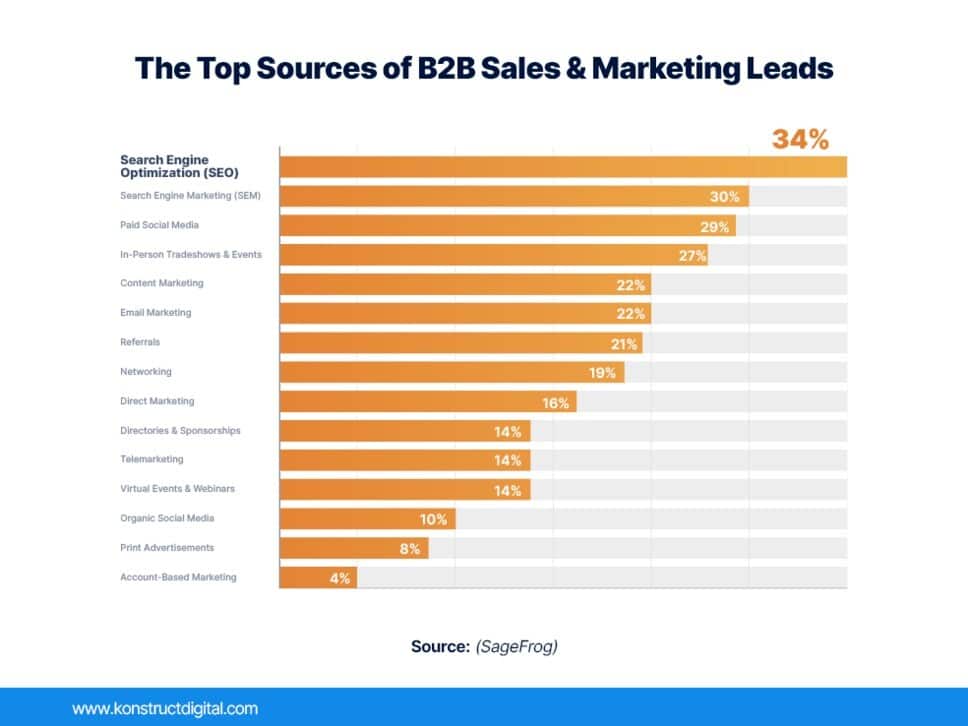
Impact of SEO
Enhanced Visibility in Search Results: Companies are easier to find when they score well for relevant keywords. Potential B2B clients use these keywords to find goods or services. This enhanced visibility also helps in organic traffic from qualified leads.
Bringing in the Correct Audience: SEO enables companies to focus on particular keywords that prospective customers use. It helps to ensure that site visitors are actually interested in the products and are more likely to become leads.
Developing Reputation and Trust: A company’s reputation is increased by having a high search engine ranking. People tend to view websites with high ranks as trustworthy and authoritative. High search engine rankings and informative content tell search engines that a company is reliable.
It creates a reputation over time.
Supporting the Buyer’s Journey: The B2B buyer journey involves
- Awareness
- Consideration
- Decision-making stages
Optimizing content for each stage increases the likelihood of conversion by meeting the audience’s needs at the right time.
Cost-Effective Lead Generation: SEO is a cost-effective method for generating B2B leads. Compared to paid search campaigns or traditional advertising.
While it requires an initial investment, the organic traffic generated does not incur ongoing costs like pay-per-click advertising. This makes it a sustainable long-term strategy.
Relatable Read: The Ultimate SaaS SEO Guide
B2B vs. B2C SEO Strategies
| Aspects | B2B SEO | B2C SEO |
| Target Audience | Business decision-makers and professionals | Individual consumers |
| Keywords | Long-tail, niche, intent-driven, industry-specific terms | High-volume, broad, transactional keywords |
| Content Strategy | Detailed, informative, research-driven | Engaging, emotionally-driven, visually appealing |
| Sales Cycle | Long, complex, involves multiple stakeholders | Short, often impulse-driven, can be minutes or days |
| Conversion Goal | Lead generation, nurturing long-term relationships | Immediate sales and quick conversions |
| Key Metrics | Lead quality, organic pipeline value, and conversion rates for qualified leads | Conversion rate, revenue per visit, click-through rate (CTR) |
| Messaging | Focus on ROI, value, and solving business problems | Focus on emotion, brand loyalty, and immediate benefits |
Relatable Read: How to Set Realistic SEO Goals for Your Enterprise Business?
1. Conduct a Complete B2B SEO Audit
An SEO audit is an organised process. It is used to assess a website’s search engine performance and pinpoint areas in need of development. It involves many processes to examine the technological elements, content, and outside variables. This ultimately affects search rankings.
Consider On-Site Factors
This involves checking elements like content, technical problems, and site speed. Some important factors of on-page SEO include:
- Optimize for search intent
- Enhance URLs
- Hone title tags
Review Backlinks and Keyword Rankings
Backlinks are one aspect of off-page SEO. It is often examined as part of a thorough SEO audit. Understanding performance inherently includes evaluating keyword ranks.
Use SEO Tools
A complete audit can be carried out with tools like Ahrefs, SEMrush, and Google Search Console. Many SEO audit checklists advise using a site audit tool to examine performance. Other steps in an SEO audit are:
- A thorough site crawl
- On-page SEO optimization
- Organic traffic checks
Uncover the Growth Potential of Your Business in Less Than 3 Weeks with Our Deep SEO Audit
2. Keyword Research: Focus on High-Intent B2B Keywords
Ever wondered why your B2B content gets traffic but no actual leads? The secret isn’t more blogs. It’s smarter keywords.
It’s time to give up on vanity metrics and focus on what actually converts if you’ve been struggling with how to rank for B2B. Learn how to identify, evaluate, and control the keywords that influence company purchases.
Focus on Long-Tail Keywords
These extremely specific search engine searches can help in drawing in high-quality traffic. These keywords are usually made up of multiple words. They are more focused and provide better search results for both site owners and users.
Long-tail keywords that target particular demands work better for business-to-business transactions than generic terms.
Incorporate Industry-Specific Terminology
It is essential to employ terminology that speaks to their particular sector and difficulties, as B2B clients are often well-informed. Even if customers aren’t looking for a specific solution, it’s important to find keywords that are directly related to their demands.
For instance, “marketing software” is not as effective as “AI-powered marketing automation for SaaS companies.”
Analyze Competitor Keywords and Trends
A key part of conducting successful B2B keyword research is examining competitors for valuable insights. Knowing the keywords that your rivals are ranking for can help you adjust your own approach.
Tools for Keyword Research
Researching keywords is often done using tools like Google Keyword Planner, Ahrefs, and Moz. These resources can offer a thorough list of relevant keyword ideas. These keywords help to improve messaging and establish a connection with the target audience.
Relatable Read: BRAND KEYWORDS NOT APPEARING ON GOOGLE? HERE IS THE FIX!
3. Optimize Your Product Pages for SEO
Think your product pages are doing enough? Think again. In the B2B world, even the best products won’t sell if Google can’t find them.
That’s where B2B SEO strategies come in. Turning your product pages from digital brochures into lead-generating powerhouses.
Use Keywords
Make sure the copy on your page reflects the pertinent keywords you’ve included in the title tag and meta description.
Focus on Technical SEO
Take user-generated content and URL structure into account when optimizing your product pages for increased
- SEO visibility
- Traffic
- Sales
Write Original, Complete Product Descriptions
Make use of thorough, keyword-rich product descriptions. To improve the quality of product pages, use high-resolution images or videos to showcase your goods from several angles.
4. Develop a Content Marketing Strategy Focused on B2B Needs
Most B2B brands talk to their audience. Smart ones talk to them.
The difference?
A sharp B2B SEO content strategy built on a purposeful B2B marketing framework. Building authority and trust through high-quality content contributes to an increase in organic traffic. The goal of B2B content marketing is to build relationships through the creation of valuable content.
Get More Traffic With The Best Content Strategy
Create Buyer-Focused Content
The main goal of any effective B2B content marketing plan should be to produce and disseminate audience-pleasing, high-quality material. This involves creating informed, relevant, and valuable content for a range of marketing platforms.
[Source: Backlinko]
Deal with Typical B2B Pain Points
Determine the objectives of your B2B content and research your target market to learn about their problems.
Optimize Content with Internal Linking and Relevant Keywords
To optimize return on investment (ROI), master B2B content marketing by concentrating on
- Strategy
- Content types
- Distribution advice
- Measurement techniques
Use Webinars and Video material
Some tactics include sending out weekly newsletters, producing industry research, and testing out material on LinkedIn.
Relatable Read: What is SEO Writing? Complete Guide for Creating SEO-Optimized Content
5. Improve Site Speed and Mobile Usability
Providing a smooth user experience, improving your search engine results, and eventually raising conversion rates all depend on optimizing your website’s speed. A poor mobile experience can have detrimental effects on users, with consumers depending more and more on mobile devices.
In actuality, with over 6.8 billion smartphone users worldwide, mobile devices have become indispensable in our daily lives.
Conduct Speed Tests
Use tools like Google PageSpeed Insights to evaluate the functionality of your website and get recommendations for enhancements.
Optimize File Sizes and Caching
Reduce the size of your images by resizing, compressing, and using WebP formats. Use GZIP compression to lighten your website and speed up download times.
Moreover, use browser HTTP caching to
- Decrease server effort
- Speed up load times
- Use less bandwidth
Ensure Mobile Responsiveness and Navigation
Use a responsive design that adjusts to different screen sizes and orientations to provide a similar experience across all devices. Make navigation easier with
- Logical menu structures
- Instantly identifiable icons
- Effective search features
Mobile users often have limited time and patience. They prioritize important content and employ caching techniques to ensure quick loading times.
Relatable Read: How to do Technical SEO for eCommerce Websites in 2025
6. Focus on Building High-Quality Backlinks
Increasing the domain authority, search visibility, and organic traffic of your website all depend on building high-quality backlinks. Backlinks work as “word-of-mouth marketing” in the digital sphere.
Quality backlinks are links from respectable, highly authoritative websites that offer substantial SEO value.
Guest Posting
One well-liked and efficient strategy for obtaining inbound links is to guest post on business websites and industry blogs. Look for niche-related blogs that welcome guest writers since relevant links increase “link juice” and build search engine credibility.
Write a brief, customized pitch email to blog owners that highlights a particular post that you find inspiring and suggests suggestions for related topics.
Relatable Read: THE IMPORTANCE OF GUEST BLOGGING IN 2025
Partnerships and Collaborations
Think about asking bloggers in your niche to review your products. This can result in links and high-quality traffic.
Content Creation and Promotion
Make informative content, like original infographics, that people will want to link to. Infographics are shared, easily comprehensible content that can help readers with their problems. Send your infographics to pertinent submission sites and directories.
Competitor Analysis
Evaluate the backlink profiles of your rivals to determine the types of websites that connect to them and the number of links you may require to rank similarly. Look for chances to obtain complimentary backlinks by means of guest articles or directories that provide links to your rivals.
You can also find broken links on other websites and replace them with your functional, relevant link.
Relatable Read: How to Outrank a Tough Competitor in Search Engine Rankings
7. Implement a Local SEO Strategy for Location-Specific B2B Businesses
For B2B organizations looking to increase exposure and their regional presence, local SEO is innovative. This tactic helps in the success of B2B companies that focus on particular geographic areas.
Optimize Google Business Profile
Optimizing your Google Business Profile with precise contact information and keywords relevant to your region is crucial. More leads and improved ranks in local search results can result from a well-optimized profile.
So keep your profile updates with all of your company’s details. This makes it easier for clients to understand your offerings, location, and business hours.
Target Local Searches
B2B companies can successfully target local searches by developing landing pages tailored to a particular location.
Get Listed in Local B2B Directories and Review Sites
B2B companies should be listed and rated on local business directories. Another way to improve local SEO is to make use of crucial business directory listings.
Relatable Read: Killer SEO Strategies for E-commerce Sites
8. Leverage Advanced Schema Markup for B2B
Schema markup is crucial for B2B companies as it increases
- Visibility
- Click-through rates
- Search engines’ comprehension of information
This is especially advantageous in markets with intense competition.
Implement Various Schema Markup Types
B2B tech firms can improve their visibility in search results by using schema markup for product, FAQ, reviews, and company profiles.
Additionally helpful for product, review, and organization information is schema markup.
Test Your Schema Markup
It is important to use the Structured Data Testing Tool, ensure that your schema markup is executed correctly.
Increase Chances for Rich Results
Well-executed schema markup can raise the possibility of showing up in knowledge graphs, rich results, and featured snippets. It will ultimately increase search engine visibility.
Relatable Read: B2B Marketing Automation Guideline for Your Online Business
9. Optimize for Voice Search in the B2B Space
Voice search integration in B2B marketing is now a necessity rather than a sci-fi idea. Considering that a sizable percentage of B2B purchasers now use voice search for business-related inquiries. As a result, making adjustments for this technology offers a considerable competitive edge.
Use Natural, Conversational Keywords
Compared to conventional text searches, voice searches are usually longer and more conversational. It often mimics genuine language.
Long-tail keywords make up 70% of all terms. You may greatly lower competition and raise your chances of showing up in voice search results. Voice assistants can extract quick answers by using question phrases in content, particularly in headlines.
Optimize for Question-Based Queries
Voice search questions usually begin with “what” or “how” and often include words like “best” and “top”. “What features should a recruitment platform have?” and “How much does a recruitment platform cost?” are examples of the kinds of questions that B2B marketers should expect their audience to ask.
Create FAQ Pages
For voice search optimization, FAQ pages work quite well because they answer frequently asked queries by users of voice assistants. It’s essential to write in the first person, using a conversational approach.
As though addressing a coworker, and to give succinct, straightforward responses when creating frequently asked questions. Because they provide material that mimics voice search queries. FAQ sections also help in improving SEO rankings.
10. Regularly Analyze SEO Performance and Adjust Tactics
Use Analytics Tools
Tracking important data like traffic, rankings, and voice search conversions requires the use of tools like Google Analytics and Semrush.
Test Different SEO Tactics
SEO is an iterative process that gains from ongoing experimentation and testing. What works best in search results can be found by experimenting with various
- Voice search strategies
- A/B testing content formats
Monitor Competitors and Adapt Strategies
Maintaining a competitive edge requires keeping up with changes in the SEO landscape and rival tactics. Future-proofing digital marketing tactics requires
- Adjusting to changing customer behavior
- Technical improvements
Relatable Read: 5 MAJOR E-COMMERCE MARKETING STRATEGIES FOR YOUR BUSINESS
Final Words
Ready to turn your B2B eCommerce site into a lead-generating powerhouse? With the right SEO strategy, growth isn’t a dream. It’s a data-driven reality.
Let the experts at MonsterClaw help you climb those SERPs and crush your competition.
Ready to grow smarter? Partner with MonsterClaw today and make your SEO strategy unstoppable.
Frequently Asked Questions (FAQs)
What is B2B SEO?
B2B SEO aims to improve a company’s website so that it appears higher in search engine results for keywords that companies use to find goods or services.
How to build a B2B SEO strategy?
Create thorough buyer profiles and comprehend your sales funnel before developing a B2B SEO plan to match content to the client journey. After that, map the terms your target audience employs to the various stages of the funnel by conducting keyword research. Next, produce valuable, high-quality content, optimize landing pages, and develop backlinks from reputable websites, both internal and external. Lastly, use analytics to track your progress and adjust your approach as necessary.
Why is SEO important for B2B SaaS?
For B2B SaaS, SEO is essential because it generates highly qualified leads, establishes credibility, and fosters long-term, sustainable growth at a lower cost than paid advertising.
How can SEO services benefit B2B brands?
SEO services help B2B brands by raising online visibility, generating highly quality leads, establishing a reputation, and eventually improving income and business growth.


